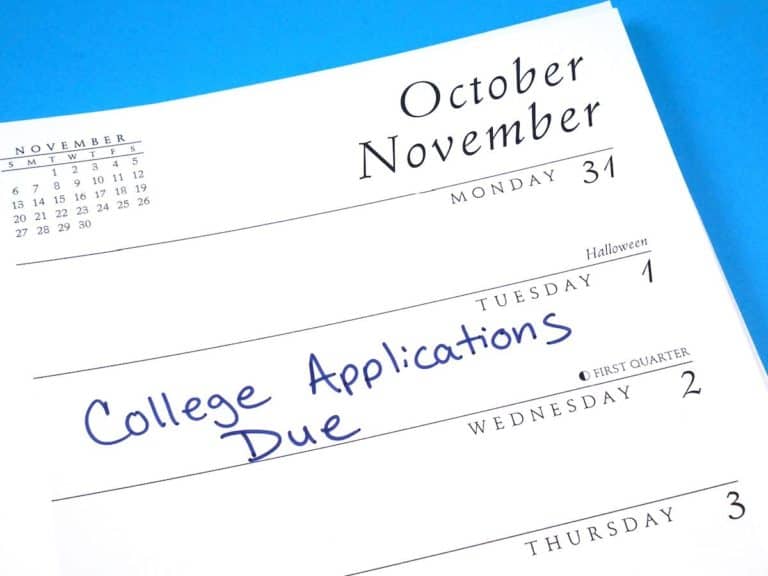What is Regular Decision College Admission Plan?
Regular decision, whose deadline is usually January 1, is the best admission plan for most high school teens who are preparing for their postsecondary careers.
With the exception of institutions with rolling admissions, all colleges and universities, from highly selective ones like Harvard University and the Massachusetts Institute of Technology to less selective ones like Purdue University and Brigham Young University, have an RD round, which provides college-bound students enough time to strengthen their applications.
In this post, we will discuss everything about applying RD!
What Is Regular Decision?
Regular decision is an admission plan with the latest deadline among all plans with a hard deadline, including early decision and early action. At any given admission cycle, the RD round has the largest application pool as most college-bound high schoolers apply to the colleges and universities of their choosing RD.
Is Regular Decision Binding?
Regular decision is a non-binding admission plan, unlike early decision where admitted students are obligated to matriculate no matter the financial aid offer. It’s completely up to the students accepted via the RD round to decide whether or not they will attend admitting colleges after comparing them, including their financial aid offers.
Among all college admission plans that high school students can choose from, ED is the only binding option.
When are Regular Decision Applications Due?
Regular decision application deadlines vary from one college to the other. Usually, however, they are anywhere between January and February, with many institutions closing RD applications after January 1. It’s important to note that some postsecondary institutions in the US may have earlier RD deadlines than the rest.
The deadline for RD applications for schools in the University of California system, for instance, is November 30.
When Do Regular Decisions Come Out?
Regular decision notifications and letters usually come out between late March to early April, thus giving high school students who are preparing for their college careers to make a choice by May 1, which is also referred to as National College Decision Day. Students who are admitted via early decision and early action also have to commit to a college on the same day.
Trivia: Did you know that the Ivy Leagues release their RD decisions all on the same day during the so-called Ivy Day?
Does Regular Decision Look at Senior Grades?
College admissions officers definitely look at the senior grades of regular decision applicants. The grades they look at, in particular, are first quarter or first semester grades. No matter the admission plan that college-bound teens choose, it’s for certain that colleges and universities will look at their grades after the marking period.
What’s nice about applying RD is that you have some time to boost your grades and, ultimately, your admissions chances.
Can You Get Scholarships With Regular Decision?
Students who apply during the regular decision round can absolutely get scholarships. However, high schoolers from low-income backgrounds who want the most generous financial aid offer possible might want to consider applying earlier since, in most instances, financial aid is often given away on a first-come, first-served basis.
Refrain from applying early just to get a good financial aid offer — do so after considering various important factors, too.
Regular Decision vs. Other Admission Plans
Besides regular decision, high schoolers who intend on going to college after their secondary school careers usually have other admission plans to choose from. In this part of the post, we’ll compare them with RD.
Early Action vs. Regular Decision
Early action is an early admission plan offered by some colleges and universities. As the name suggests, EA makes it possible for students to apply and receive decision notifications earlier — sometimes even before others have the chance to apply RD, which has a later deadline. Both EA and RD, despite the difference in deadlines, are non-binding admission plans.
Can You Apply Regular Decision After Early Action?
Students can apply regular decision after applying early action. However, it’s important for them to note that they can only do so if they intend to apply RD to a different institution given that they can apply to a particular college only once per admissions cycle. Deferred EA applicants need not apply RD to the same school as they are automatically added to the RD pool.
Can I Apply Both Early Action and Regular Decision?
Students can apply both early decision and regular decision to several different colleges and universities. However, high schoolers who are applying restrictive early action (also referred to as single-choice early action) may not apply to other private institutions via any early admission plan, but they can apply early to public schools provided that the plan is non-binding.
Should I Apply Early Action or Regular Decision?
College-bound teens with a clear top-choice college and who are happy with their GPAs and test scores may consider applying early action, which can increase their admissions chances and make the rest of their high school careers less stressful. Meanwhile, they should apply regular decision if they need more time to improve and complete their applications.
Rolling Admission vs. Regular Decision
Rolling admission means colleges and universities accept applications within a lengthy admission window — college admissions officers review applications as they receive them and send out decisions as they make them. On the other hand, regular decision has a hard deadline, after which admissions officers will review applications and send out decision notifications.
Early Decision vs. Regular Decision
Early decision, as the name suggests, is an early admission plan that allows high schoolers who are gearing up for college to receive decision notifications earlier. ED is similar to early action, except that it’s binding. The ED round ends November 1 at most institutions. On the other hand, regular decision, which is non-binding like EA, ends January 1 in most instances.
Can You Apply Regular Decision After Early Decision?
Students who get admitted via early decision cannot apply regular decision to other colleges because ED is binding, which means that they must enroll in their admitting schools. Meanwhile, students who get deferred or rejected via the ED round can apply to other colleges and universities of their choosing during the RD round.
Is Early Decision Easier Than Regular Decision?
Applying early decision is harder than applying regular decision because high school teens must complete their applications quickly to beat the deadline, which is much earlier than the deadline for RD. While applying ED may boost one’s admissions chances, the application pool for the ED round is extremely competitive, which can make it hard for average students to get in.
Is It Bad to Apply Regular Decision?
Applying regular decision is not bad. As a matter of fact, it can be advantageous for college-bound high school teens who need more time to finalize their college lists and strengthen their applications for better admissions chances. However, RD applicants may not have the best housing options and financial aid offers among all incoming freshmen students.
In this part of the post, we’ll take a look at some of the pros and cons of RD.
Pros of Applying in Regular Round
- You can retake the SAT or ACT if you are unhappy with your initial or previous scores
- You have the opportunity to get better grades and thus increase your GPA
- You can apply to as many colleges as you want without committing to any of them
- You have more time to decide which schools to add to your college list
- You have more time to decide which major to declare, although it’s not a requirement most of the time
- You don’t have to hurry filling out the Common App or Coalition App and gathering various requirements
Cons of Applying in Regular Round
- You will no longer enjoy the increased admissions chances that come with applying early
- You will have to compete against a lot of students as the vast majority of college applicants apply RD
- You will have to wait longer to learn whether or not you are accepted by your top-choice school
- You may have to settle for second-best housing options
- You may have to make do with lower financial aid offers
- Your high school graduation season will be more stressful and hectic than early applicants
Disclaimer: The views and opinions expressed in this article are those of the authors and do not necessarily represent those of the College Reality Check.





